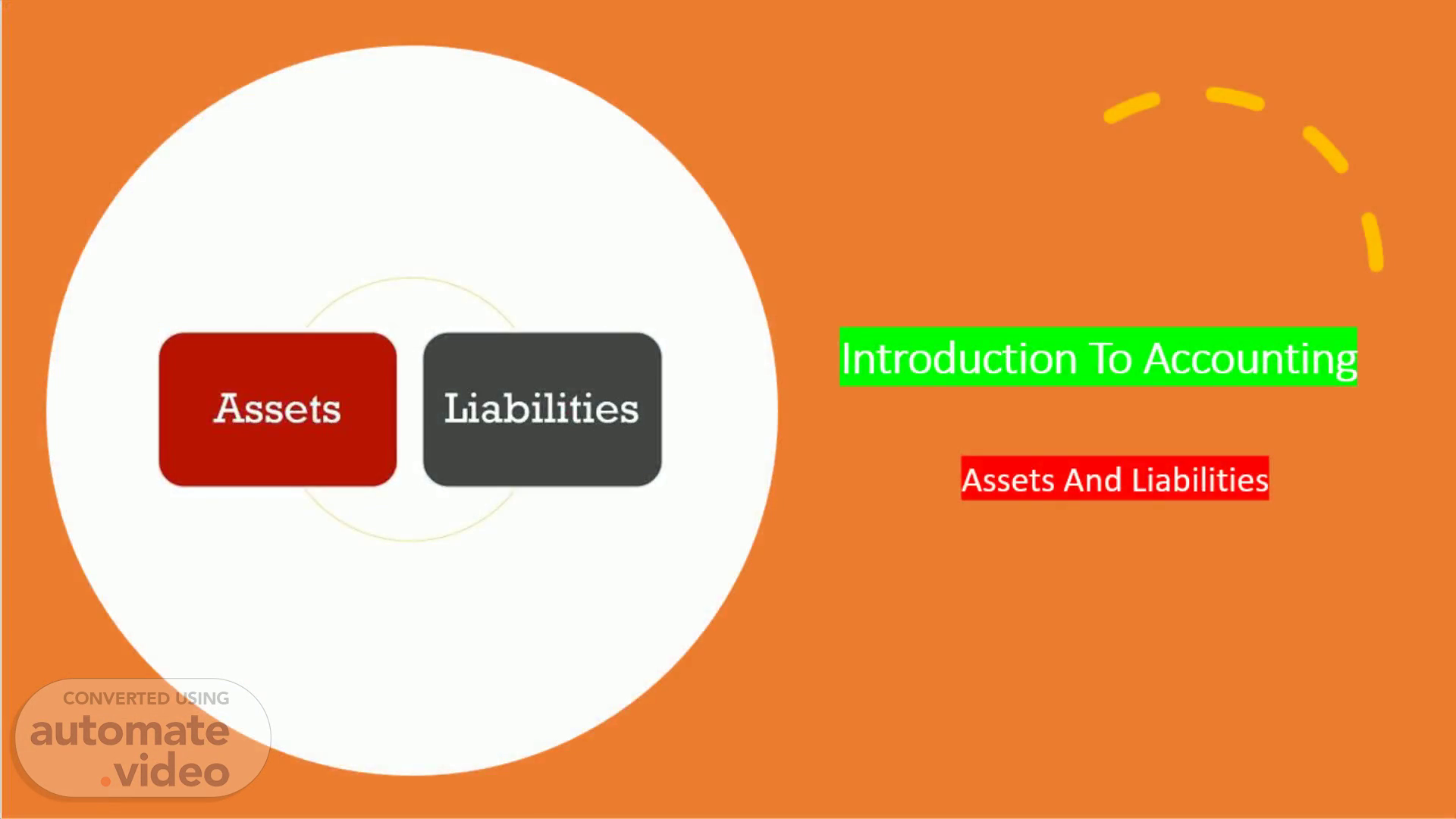
Introduction To Accounting
Scene 1 (0s)
Introduction To Accounting. Assets And Liabilities.
Scene 2 (10s)
. What Are Assets? An asset is any resource or good used to generate cash flow, reduce expenses, or provide future economic benefits for an individual, government, or business. Assets contain economic value and can benefit a company’s operations, increase the value of a business, or raise an individual’s net worth. What Are Liabilities? In business bookkeeping, liabilities are financial obligations to outside parties. The most common type of corporate and small business liability is monetary debt, which is largely grouped under accounts payable on a cash flow statement. A company's total liabilities include short-term liabilities (also called current liabilities) which must be paid within one year, long-term liabilities (also called non-current liabilities) which are due in more than one year's time, and contingent liabilities which only need to be paid under certain circumstances. Long-term debt, credit card debt, machinery depreciation, sales tax, and income tax are all types of liabilities..
Scene 3 (1m 3s)
Relationship Between Assets And Liabilities Assets represent a net gain in value, while liabilities represent a net loss in value. A standard accounting equation pits the total assets of a company against its total liabilities, and investors use this ratio of assets vs. liabilities to place a valuation on the company. On a standard balance sheet, total assets are listed on the left side of the page. Depending on accounting procedures, this list of assets may include both current assets and long-term assets.
Scene 4 (1m 26s)
Types of Assets Current assets : Current assets are highly liquid assets that can be quickly sold and converted into currency. Current assets for businesses can include cash, accounts receivable, inventory, and prepaid expenses. Fixed assets: Fixed assets, also referred to as hard assets or long-term assets, may take a long period of time to earn cash. Some examples of fixed assets include buildings, land, furniture, or any other type of asset that is not intended for sale within the year. Tangible assets: Tangible assets are real property—like inventory, real estate, machinery, cash, or furniture—that is physically tangible, and are often in the owner’s possession. Intangible assets: Intangible assets are items or goods that exist theoretically rather than physically. Some examples of intangible assets include permits, intellectual property, patents, brand reputation, and trademarks etc. Operating assets: Operating assets are any assets that generate revenue through day-to-day business operations and help maintain workflow. Non-operating assets : Non-operating assets are business-owned items that generate revenue but are not necessarily needed for everyday operations, such as vacant land or short-term investments..
Scene 5 (2m 16s)
Examples of Assets Cash is the ultimate short-term asset . A company with large stores of cash has the financial flexibility to respond to setbacks quickly. Intellectual property can be a long-term asset . A company with high-quality patents and copyrighted material can be well set up for future success. Real estate is a potentially flexible asset . Real estate tends to appreciate with time. By owning its own buildings, a company enjoys a source of future revenue, should it eventually sell the real estate. In the short term, it may also be possible to borrow cash against the value of the real estate, although the bank loan will create a long-term liability. Machinery is a depreciable asset . Machinery counts as a corporate asset, but machinery depreciates over time. Businesses can claim these depreciations as tax deductions. Intangible assets can lead to employee retention . Strong company culture cannot be bought and sold on the market, but it can improve employee retention , making employees more likely to grow with the company over the long term.
Scene 6 (2m 58s)
Examples of Liabilities Liabilities also appear in all corners of a business's operations. Payments to lenders are long-term liabilities . There is an economic benefit in taking out business loans because they provide short-term liquidity. However, these loans must be reported as long-term liabilities on a balance sheet. Annual income taxes are short-term liabilities . Income taxes are an annual affair. By definition, they count as short-term liabilities. Unearned revenue can be a liability . If a company's income statement shows a deficit of anticipated revenue, this counts as a short-term liability. Companies budget for a certain level of annual cash flow, and when revenues do not meet expectations, they go to the right side of a balance sheet as a liability..
Scene 7 (3m 30s)
What are assets and liabilities? - Quora.
Scene 8 (3m 38s)
Assets In Accounting, Identification, Types and Learning How To Calculate Them.
Scene 9 (3m 47s)
Assets and Liabilities: Difference, Meaning, Classification, Videos.